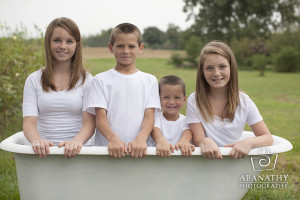No such thing as a bad picture day!

Winter’s shiver offers an encore, earth, already full up, takes another drink, and we are once again cast into the gray for Sunday. Bring an umbrella and say “cheese”, won’t you?
Of the many lessons I still hold dear from my college photography days, I would have to say avoiding cloudy days for outdoor shoots is not necessarily one of them. Would I avoid drops of rain making their way into the many crooks and crevices of my camera and lenses? Of course! But, to the overcast skies, I welcome the chance for natural diffusion.
Sure bright, sunny days offer the opportunity to use the faster film speeds and, thereby, give a few more bells and whistles for your shoot. However, when shooting outdoors on such sunny days, one might also find themselves seeking shade or a handheld diffuser to avoid harsh shadows and squinty eyes. Overcast, on the other hand, offers natural diffusion of daylight and increases the range of possibilities.
So with this benefit in mind, why then would one be so inclined to hold out for the sun? Well, the argument in favor of sunny days does hold other merits besides the ones mentioned above. Harkening back to my days with a film camera, lots of sunshine was the best way to get the best shots. First of all, I was shooting black and white film, which does not rely on color, but contrast to effect impact. Overcast skies hindered the ability to capture such contrast up front and, even later in the darkroom, it was not the easiest attribute to recapture.
A second downfall to overcast skies and film cameras included the flat nature of the finished product. No contrast, and general, multidirectional light led to a very two-dimensional, washed shot where faces and smiles seemed to loose some luster and flattery. Add color to the mix and you have a color temperature consideration too. When dealing with film, many of these aspects must be addressed in/on the camera or be lost in the final shot.
So, what has changed since my college years all those centuries ago? The progressive transition from film to digital, of course! Where there was once fixed film speeds on entire rolls of film, there is now the ability to change speeds between shots. And where there was once a low-contrast image with a handful of enlarger filters and papers to work with (just go with me on this one, you don’t need to know technical details), there is now computer software with infinite options. You can even adjust the color temperature too!
Its seems almost blasphemy to type such things. Along with the caution against shooting under cloudy skies, I don’t think we were even allowed to think about the aid of computer software in class. It was impractical to apply graphics software to our silver-grain emulsion photography (and I don’t even want to think of the wrath I would have incurred had I brought in a computer printout of my assignment). In fact, I even recall getting into a few, somewhat heated, arguments with a forward-thinking friend of mine about how I could not simply use Photoshop on my photos.
But, to be fair, digital photography was not at its best back then and this was to say nothing of the laughable quality of household printers when it came to photographs. Digital photography, as a whole, has become much, much better since those days and computer software offers quite a bit more flexibility when it comes to the film taboos of old. Gray need no longer result in flat photos and Western Kentucky weather need no longer be a session scheduling nightmare.
So, to the gray, I ask for “cheese” because overcast skies are no reason to miss a good shot. Unless, of course, it is raining…But then again, for a pretty penny more, one can sidestep that taboo as well.